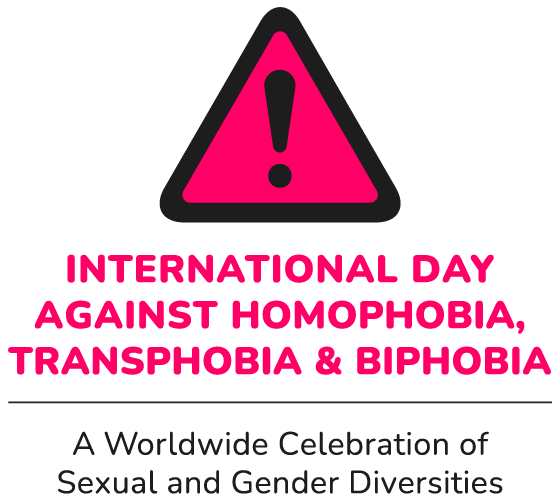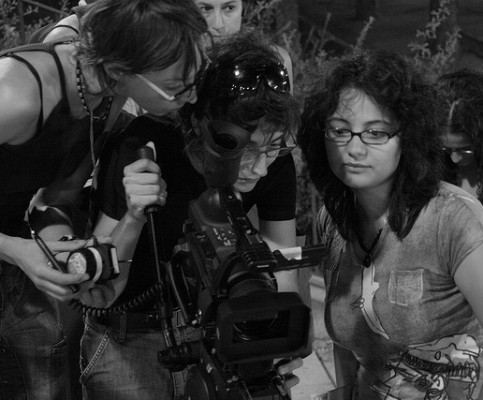Republishing for International Women’s Day 2014 (Originally published for March 8, 2013)
Interview by Claire House
I met and talked with Sonia in the offices of ABIA (the Brazilian Interdisciplinary AIDS Association) in Rio de Janeiro. The ABIA offices also house the NGO Sonia co-chairs, Sexuality Policy Watch, which reports, intervenes on and supports research on sexual and reproductive rights issues around the world. Sonia has been active, particularly, in feminist and HIV/AIDS related activism and policy thinking since the 1980s, and is a well known source of expertise on the inter-relations between feminist activism and other forms of sexual and human rights rights struggles. Though she was tired after a difficult day’s work (especially given a wider context of financial constraints facing the social justice sector in Brazil), she welcomed a March 8-inspired opportunity to reflect on some key issues facing contemporary sexual and gender rights activists, with a particular focus on what feminism and LGBTQI rights can do for one another.
I began by asking Sonia if she could offer a commentary on how homophobia and transphobia are, at root, feminist questions? She laughed as she started to respond:
Well there is a short answer, a long answer, and a pretty short answer – a nutshell – which is that fighting against, trying to contest and criticising homophobia, transphobia and lesbophobia necessarily implies interrogating and undoing the heteronormative pact! Which is something that the feminists have been doing for some time, using a different framework, which is basically the framework of patriarchy.
But the fact is that – and this is where the nutshell becomes complex – using this idea of patriarchy, or even androcentrism, does not automatically take you to a critique of heteronormativity. You may criticise differences in power relations, economic relations, you may want to produce different legal frameworks, but you remain caught up in the binary logic structurally framed on the basis of man-woman, male-female, masculinity-femininity. This gramatics which is all over the place and taken for granted as unequivocal, inexorable and inevitable.
And do you see the LGBT movement sometimes repeating these binaries?
Of course! Pierre Bourdieu has this insightful elaboration in his famous paper on male domination – a phrase which I have been quoting so many times. He describes the systems of gender symbolic domination as being in our minds, in our bodies, in spaces and objects. This form of domination is about how your body is construed by culture, about how you perceive it, how you perceive the bodies of others, it is about how spaces are divided between male and female zones and also about how objects are attributed to gendered uses or even gender denotations, as in languages as Portuguese, French, Italian, Spanish that engender “things”. The system is like a Matrix, as in the movie. You disembark in a world determined by this binary matrix embedded in unequal power relations and will be domesticated by it, deeply. Bourdieu was was talking about male domination but the same applies to heteronormativity, as a structural contract organising societies. There may be variations in the way the matrix defines roles and distributes power, such as the matrilienar Trobriand system described by Malinowsky in the early 20th Century, which differs from the strictly patriarchal frame of Chinese, Indian and European culture. Today these systems are in flux, but yet they are everywhere – at the centers but also at the margins of social and cultural systems. So it is not exactly possible to entirely escape in our self constructions and relationships with others from underneath patterns of misogyny, patriarchy and gender binary logics, even when a person or a group is situated at the margins.
Suffice to critically think of the social construction about and practices of the LGBT movement. To start with, it is “normally” called the gay movement, by the press, by institutions, by movement actors themselves. The LGTBIWYZA is an extremely heterogeneous crowd, different bodies, different gender expressions, a wide variety of desires, but reporters, TV, state institutions to a large extent keep saying “gay”, thereby subsuming this richness under the dominant umbrella of gay bodies and desires. This is not about heteronormativity, it is about male dominance in Bourdieu’s classical terms, although it is taking place outside the heteronormative structure. Not surprisingly we then have all these tensions concerning categories, terminologies and even the order of the “alphabet soup”. What is at stake in these battles is the male centrality in gender and sexuality social constructs.
Do you think that’s changing?
It is, it is, definitely because there has been much internal contestation in the last ten years. The global emergence, expansion and consolidation of trans movements is perhaps the more palpable sign of this transformation. Yet it remains very hard to really shake the way in which gender and sexuality markers are imprinted in minds, bodies, spaces and objects because these systems of meaning are so deeply articulated with functional, linguistic and symbolic structures of societies. A gay man is is still a “man”. Gay men might be at the margins, which is the case in most societies, because they do not fill the scripts deployed by heteronormativity. But gay men can also be powerful or occupy the higher echelons of male hierarchies. Examples abound: multinational CEOs, the Catholic Church priests or even bishops and cardinals, politicians that do not disclose their orientation. And because they are men, they can get more easily caught into reproductive patterns of dominant masculinities, which are of course, mediated by many different structures and mechanisms across cultures, and cannot be fully grabbed if we do not take into account class and economics, race and ethnicity, location, social segments. In any case there are gay men who – though they are not hegemonic males themselves – share political values and social practices of what Raywen Connel has defined long time ago as hegemonic masculinities.
This can even be said, in very rare cases, of trans men. And this necessarily always implies complex power and exclusion dynamics. A few years ago I read this amazing story of a female biologist of Stanford University, if I am not wrong, who transitioned to become a trans man. Being a biologist working at an American University in the 21st Century is to occupy a place high up in the global social hierarchy. But even today at that high level there are sharp gender disparities, suffice to remind that just 5 percent of the big multinational CEOs are women and this why Sheryl Sandberg, the Google CEO, wrote her book. But the story is that at the first conference our biologist attended as a male presented his findings, and one male participant goes to him and says: Dr. Sparr I want to congratulate you for your intelligence and intellectual brightness. Incredible findings. Have I told I’ve met your sister before, she’s also smart, but your brains are better!
This example provides a deep glimpse into the complexities I am speaking of in terms of how gender and sexuality systems operate through continuous mechanisms of exclusion and heirechization. This person can be said to have lived many years as a woman professionally located at the higher echelons of global academia. Then she transitions as a man and we can suppose that this implies moving further up. But this is not really so because in the system logic she is not a “real man”, despite all his other intellectual, or even class attributes. If exclusion and disqualification happens at that level it is not hard to imagine what happens at lower end of the pyramid – if somebody is poor black trans man born and living in a country in the global South.
So until now I have been talking about the effects of power dynamics, in particular male dominance or androcentrism in the dynamics of LGBTQI politics. But we must remember that cis women, even feminists are also caught into the same webs of meanings and related asymmetries. The better known illustration is found in those feminist currents that do not problematize “women” as a constructed category and firmly believe in the existence of “real women” whose fundamental marker is a natural vagina. Furthermore they do not conceive feminisms as world visions – something that is fundamentally constructed in our minds, between your ears – but as also dependent on this “real vagina”. These are the streams that I often call expressions of “vaginism”.
Sexuality Policy Watch usually addresses reproductive rights together with sexual rights?
Yes we do not see these concepts or related struggles as isolated but rather connected though also distinct domains. We give particular attention to abortion because it is the issue that is now located at the very troubled political front lines, everywhere. But there are many important reproductive rights issues that also deserve to be constantly visible, such as prohibitions of contraception that are not unrelated to prohibition of condoms. Or yet more compelling, the problem of forced sterilization of trans people, which is as critical a violation of human rights as the massive forced sterilization of women in India that, once again, has reached the front pages.
And do you think that there are some parallels between abortion and LGBT rights? Perhaps because they are both questions which confront conservative and religious ideas about reproductive sexualities?
Yes, the Catholic doctrine is a a strategic place for us to look at to grab the connections, because it a discourse that at once aims at fixing the natural and unchangeable woman and man binary structure. This thereby makes non-heterosexual expressions of desires or identity – which the Church intellectuals define as polymorphous sexuality – abject, and centres this male-female natural relation’s procreative capacity. And thereby stigmatizes all forms of non-procreative sexuality – except of course priests’ and nuns’ celibacy. This radical condemnation evidently includes the refusal to procreate, which is abortion.
But Catholic doctrines change, as we do know, and in recent years it has absorbed the calls for gender equality in its own way, admitting that women deserve “dignity” – a very unstable concept in this context as it may be interpreted as honour – and have started to openly condemn violence against women. But at the same time they have sophisticated further, their doctrinal conceptions of the gender binary and its intrinsic imbrication with procreation. From the feminist and LGBTIQ movements perspective, therefore, the struggle against this conception would be an evident common political platform.
Yet this is not happening. Very concretely, in Brazil and elsewhere feminists have not many allies within the LGBT movement in their hard fights to contain regressions in relation to abortion rights. And I suspect that if an open discussion is triggered about the issue many people within the wider LGBT community will reveal that either have not thought properly about it, or else that in fact they are against abortion. Another factor playing a role in this disconnection, that makes it difficult to move towards a wider and more inclusive consensus on sexual and reproductive rights, is definitely, on both sides – meaning feminists and LGBTQI communities – the perverse effects of identity politics. Having said that it is also important to say that in various countries lesbians are doing incredible work in relation to abortion. Also if and when alliances are established they are solid and very creative. In Brazil, feminists struggling for abortion rights have few but very committed allies in the LGBTQI movement.
And we should also address in this discussion the ways these “rights” have also become subject to perverse games in the realm of state strategic politics. A large number of governments have started in recent years to play games with LGBTQI rights on the one hand and abortion on the other. The firsts sign of this trend was detected in Nicaragua in 2007 when the Penal Code reform at once stroke down the sodomy law and entirely prohibited abortion. Since then in the Americas we have witnessed the same pattern emerge elsewhere: the US, Argentina, Brazil, Uruguay, even though in Uruguay after eight years of battle an abortion law was approved (which however is not as good as the one vetoed by President Tabarés in 2008). These games are being played, amongst other reasons, because governments are juggling with the pressures of conservative opposition forces and decide to give them the rings of abortion rights, to retain the fingers of LGBT rights.
I would say the same patterns applies now to the UK where we see David Cameron happily playing the LGBT rights agenda, in fact deploying discourses that have been correctly interpreted as a new wave of imperialism to African countries, which is not a very productive strategy as it fuels the mills of conservative social sectors and state actors. But from what I understand, on reproductive rights and, in particular, abortion, the Cameron administration is decidedly regressive. They are speaking of and investing on maternal mortality and family planning in ways that can easily be described as back to the future of health and population policies of the 1970’s. Rather pathetic. Not to mention that DFID has been funding the sterilization program of the state of Rajasthan in India that quickly became one of the tragic novel examples of reproductive rights violations in the 2000’s. There are very few places where this double bind policy model is not being adopted. The Federal District in Mexico and the Colombian Constitutional Court are two exceptions in delivering progressive policies and decision in the two domains. But they are drops in an ocean.
Why do you think this is happening?
We need more fine investigations of this trend. But I have a hypothesis. Firstly, dogmatic religious sectors and other conservative forces have been able, in the last 30 years, to construct a very negative image of abortion. They have really succeeded on that front, much more than in relation to relation to non-normative sexualities, at least in the case of Latin America. Not accidentally, the attack on same sex relations and desire became their main target more recently. The other possible explanation is that LGBT rights in terms of expressive politics – meaning the ability of state to deliver speech acts and write documents – more easily projects the image of modernity, of being in tune with contemporary cultural and market trends: it is the exaltation of diversity! LGBT rights are also about individuals “being themselves”, the right to express yourself, which is also very akin with the market oriented societies right? Last but not least it is about love, it’s about Valentine’s Day. Why can’t people love each other? Love is such a good thing. Right? It’s so easy for them to argue in favour. Not to mention the economic interest on what in US critical circles is called the circuits of the “pink dollar” – the huge amounts on money now circulating in the domains of LGBT tourism and market niches.
Whereas in the case abortion, it is not exactly easy to embark in a similar stream of discursive and policy deployments. Yes, the right to decide, implied in abortion, also speaks of autonomy and freedom. But abortion can not be addressed without also referring to health risks, suffering, violence, cruelty and pain. Furthermore, as I said before, the adversaries of abortion rights have been able to systematically build upon the negative and painful dimensions of abortion to their benefit. State actors caught under pressures in relation to these two sets of rights claims quite easily opt for the easiest way – the comfort zone. Even when in reality things are much more complicated because LGBTQI rights are also about violence, killing, pain.
Violence against women and against LGBT people also have parallels, right? And, maybe it’s also important to highlight that men are often the perpetrators of both, right?
Yes, we can definitely say that dominant forms of masculinities are the origin of both gender based domestic and sexual violence, and homophobic hate crimes and other related violations. But at the same it is also very important to underline that men themselves are are also those who are more killed and injured by violence, which also talks about the highly detrimental effects of gender constructs that spill over in all directions. I can give you the Brazilian example. In 2007, we had 47,000 homicides in Brazil and this is, by and large the level of lethal violence in the country in the last ten years (between 40,000 and 50,000 people killed, which corresponds to the number of American soldiers who died in the whole of the Vietnam war. just to give you a scale). Of that total figure 5% are homicides of women, and I would say it would not be exaggerated to estimate between 500-1,000 homophobic killings, because the data we have collected by GGB is based on press reports and certainly we have a high level of under notification. This means that more than 90% of people killed are men killed, mostly by other men. The majority of these men, we do know for quite a long time, are young Afro-Brazilian poor. This is not to say that lethal violence against women of homophobic hate crimes are unimportant. They are important because, amongst other reasons, quite often they imply extreme levels of violence and cruelty. But it is vital to situate gender and sexuality driven lethal violence in relation to the wider landscape of structural violence and its deep gender imprints. This data should lead us to interrogate the elements in the gender systems and constructs of masculinities that lead men to kill other men, women and gender non-conforming persons in such a scale.
For more information on the work of Sonia and Sexuality Policy Watch, see their website or follow SPW on facebook.



